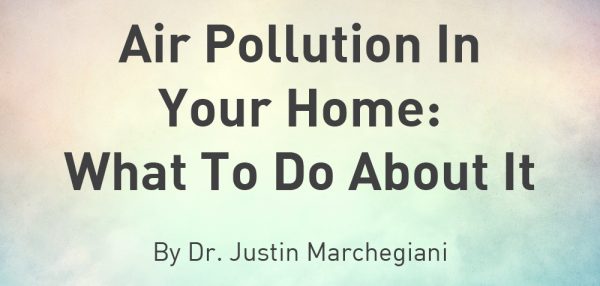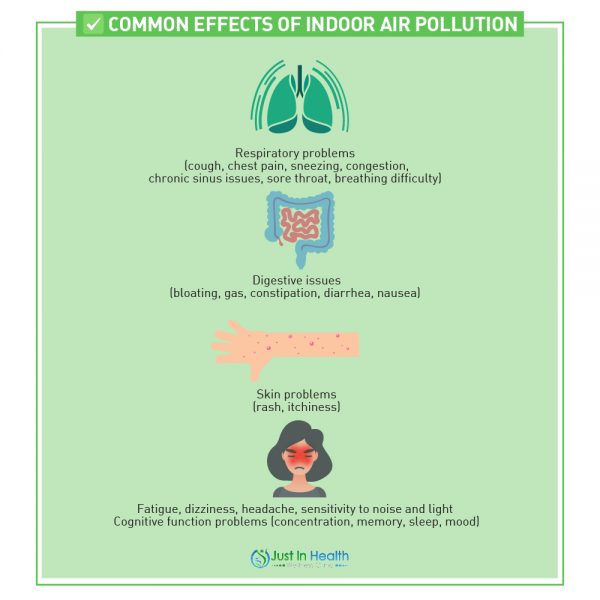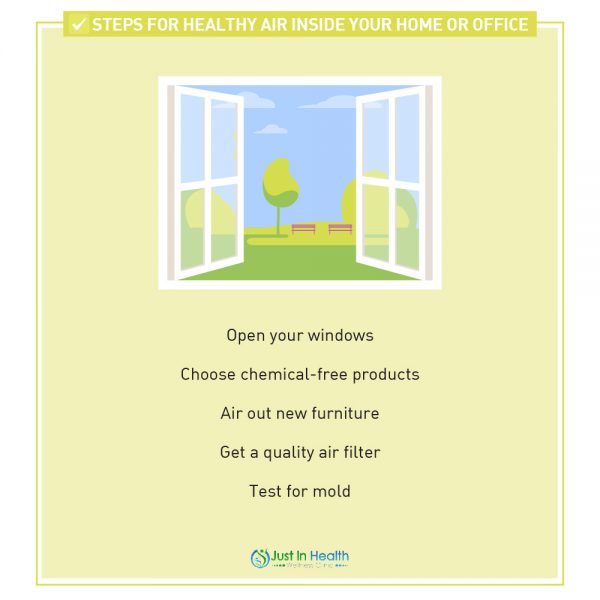

By: Dr. Justin Marchegiani
When we think of air pollution, we typically think of car exhaust and chemical factory gasses. However, you may be surprised to learn that indoor air is often MORE toxic than the air outside! This is really put into perspective when you realize average America spends about 90% of their life indoors. So, what can you do to make sure your indoor air is healthy? Today we’re going to dive into common airborne toxins in your home, and how to create a healthy indoor air environment!
A growing body of scientific research is pointing to indoor air as more polluted than outdoor air—and yes, this even takes into account the air outside in overpopulated, industrialized cities. Since most people spend about 90% of their lives indoors, this points to indoor air as a seriously underlooked health issue. What makes matters direr: those who are most susceptible (the young, the sick, the elderly) are generally the ones who spend the most time indoors.
Click here to learn how to take your health to the next level!

If you suffer from the following symptoms, it’s time to re-evaluate the air you’re breathing:

There are a couple of main factors that make indoor air 2 to 5 times more toxic than outdoor air. One of these factors is the lack of ventilation inside the house, which leads to a buildup of toxic compounds.
Smoke: If a smoker lives in your house, the risk of secondhand smoke exposure should not be overlooked. The CDC has reported millions of deaths due to health problems caused by secondhand smoke exposure.
Mold: Mold and mildew can be deadly, and oftentimes go unnoticed. It is crucial to take the presence of mold in your home seriously. Professional remediation, and in some cases even changing residence, may be necessary.
Household Products: If you haven’t already read my article on fragrance as the new secondhand smoke, you’re in for an eye-opening experience. “Fragrance” is listed as an ingredient on at least 75% of mainstream products, ranging from shampoo to toilet cleaner. The word “fragrance” signifies a secret cocktail of hundreds of toxic chemicals that are not subject to safety testing. However, many of these chemicals are known neurotoxins, cause respiratory problems, behavioral issues, and autoimmune disease. When you start using household cleaners and personal care items that contain chemicals such as fragrances, these particles are trapped in the air and you are subject to constant inhalation.
Chemicals: Most people now know that asbestos is nothing to play around with. Asbestos has been linked to lung cancer, Unfortunately, it still lingers in the insulation, paints and floor tiles of many homes. However, asbestos is not the only dangerous compound in your home.
Your furniture, pillow and mattress, carpet, and even the paint on your walls probably contain VOCs, volatile organic chemicals. These household objects outgas dangerous chemicals that stew inside your home and are linked to cancer, heart disease, and lung disease.
And more: There are some things that occur naturally and generally harmlessly in nature (pollen, animal dander, pest leavings), but become problematic when they make their way indoors. The lack of ventilation and fresh air allows allergens to fester and grow.

While the dangers of indoor air pollution sound scary, luckily there are many things you can do to improve the air quality of your home and office.
Do you have any questions about indoor air quality? If so, leave them in the comments below, or let me know on my Facebook page or YouTube channel, where I answer all your health and wellness questions!
Still have questions about the air inside your home? Click here to talk to a professional!
https://www.niehs.nih.gov/health/topics/agents/air-pollution/index.cfm
https://www.mdpi.com/2073-4433/8/8/136
https://www.epa.gov/report-environment
https://www.ncbi.nlm.nih.gov/pmc/articles/PMC3501547/
https://www.epa.gov/indoor-air-quality-iaq/volatile-organic-compounds-impact-indoor-air-quality